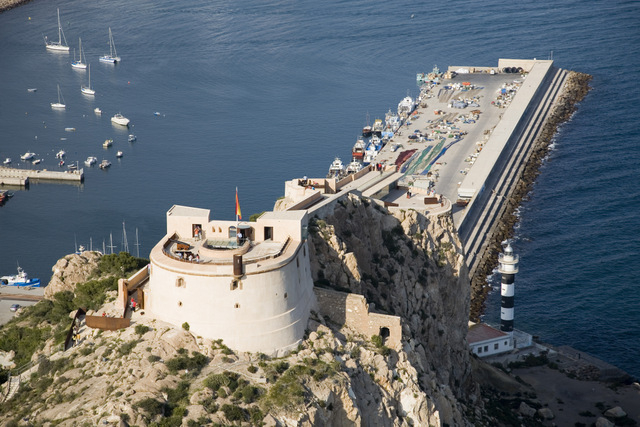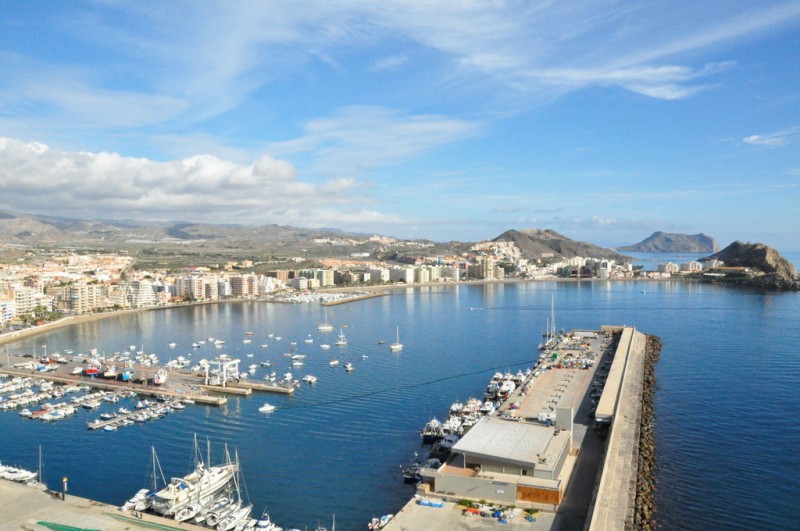- Region
- Águilas
- Alhama de Murcia
- Jumilla
- Lorca
- Los Alcázares
- Mazarrón
- San Javier
-
ALL AREAS & TOWNS
- AREAS
- SOUTH WEST
- MAR MENOR
- MURCIA CITY & CENTRAL
- NORTH & NORTH WEST
- TOWNS
- Abanilla
- Abarán
- Aguilas
- Alamillo
- Alcantarilla
- Aledo
- Alhama de Murcia
- Archena
- Balsicas
- Blanca
- Bolnuevo
- Bullas
- Cañadas del Romero
- Cabo de Palos
- Calasparra
- Camping Bolnuevo
- Campo De Ricote
- Camposol
- Canada De La Lena
- Caravaca de la Cruz
- Cartagena
- Cehegin
- Ceuti
- Cieza
- Condado de Alhama
- Corvera
- Costa Cálida
- Cuevas De Almanzora
- Cuevas de Reyllo
- El Carmoli
- El Mojon
- El Molino (Puerto Lumbreras)
- El Pareton / Cantareros
- El Raso
- El Valle Golf Resort
- Fortuna
- Fuente Alamo
- Hacienda del Alamo Golf Resort
- Hacienda Riquelme Golf Resort
- Isla Plana
- Islas Menores & Mar de Cristal
- Jumilla
- La Azohia
- La Charca
- La Manga Club
- La Manga del Mar Menor
- La Pinilla
- La Puebla
- La Torre
- La Torre Golf Resort
- La Unión
- Las Palas
- Las Ramblas
- Las Ramblas Golf
- Las Torres de Cotillas
- Leiva
- Librilla
- Lo Pagan
- Lo Santiago
- Lorca
- Lorquí
- Los Alcázares
- Los Balcones
- Los Belones
- Los Canovas
- Los Nietos
- Los Perez (Tallante)
- Los Urrutias
- Los Ventorrillos
- Mar De Cristal
- Mar Menor
- Mar Menor Golf Resort
- Mazarrón
- Mazarrón Country Club
- Molina de Segura
- Moratalla
- Mula
- Murcia City
- Murcia Property
- Pareton
- Peraleja Golf Resort
- Perin
- Pilar de la Horadada
- Pinar de Campoverde
- Pinoso
- Playa Honda
- Playa Honda / Playa Paraíso
- Pliego
- Portmán
- Pozo Estrecho
- Puerto de Mazarrón
- Puerto Lumbreras
- Puntas De Calnegre
- Region of Murcia
- Ricote
- Roda Golf Resort
- Roldan
- Roldan and Lo Ferro
- San Javier
- San Pedro del Pinatar
- Santiago de la Ribera
- Sierra Espuña
- Sucina
- Tallante
- Terrazas de la Torre Golf Resort
- Torre Pacheco
- Totana
- What's On Weekly Bulletin
- Yecla


- EDITIONS:
 Spanish News Today
Spanish News Today
 Alicante Today
Alicante Today
 Andalucia Today
Andalucia Today
Castillo de San Juan de las Águilas, Águilas castle
A 16th century defensive fortress built to warn of pirate raiders from northern Africa
The Castillo de San Juan in Águilas is high above the town, originally erected as a 16th century defensive fortress to protect against pirate attack and is well worth a visit, offering impressive views across the surrounding countryside and the town below.
The castle can be visited as an attraction on its own or can form part of a morning out visiting the town. The Tourist Office offers a free monthly guided visit of the town, which is in Spanish, but is fairly self-explanatory and there is a leaflet available in English at the entrance to the castle (see feed box below for next tour dates).
Alternatively, this article, together with the History of Águilas can be printed off and used to accompany the visit to give more information in English.

A little background information:
Águilas has a long history of occupation, and although there are remains of prehistoric activity in the area the first major culture of importance which left behind substantial remains was that of the Romans.
The Romans invaded what is now Cartagena in 209 BC and set about utilising the assets of their new territory, establishing an important salt fish manufacturing industry in Águilas. Salt fish sauces were a valuable and highly prized export, and tanks were built in this area to produce expensive garum sauces which could be sold on along the Mediterranean coast or shipped to feed the city of Rome.
It's highly likely that the Romans constructed some sort of structure on the site of the castle, but the first notable remains date from the period of Moorish occupation between 713 AD and 1243 AD.
Archaeologists have discovered structures belonging to a Moorish burial ground on the site of the modern town below the castle in Calle San Juan, indicating the likelihood of a hisin, or watchtower in this location. The period of Moorish occupation was beset by tribal rivalries and disputes, and most settlements offered fortified shelter for inhabitants and their valuable livestock.

The Moors suffered continuous attack as Christian Kingdoms from the North of Spain fought to reconquer territories and regain control from the Moorish invaders, a goal which was achieved in this area in 1243 when Prince Alfonso, later to become King Alfonso X of Castile, took the Kingdom of Murcia. The Moors were forced back into their last Kingdom of Granada, placing Águilas in a dangerous position close to the border.
Alfonso re-inforced the Moorish construction and built more substantial fortifications to deal with the constant threat of attack and there were troops stationed here continuously until 1284.
In 1492 Spain was united for the first time by the marriage of the Catholic monarchs of Isabella I of Castile and Ferdinand II of Aragón, who united their forces and succeeded in evicting the Moors from the Kingdom of Granada. This should have made Spain a safer place, but the decision of the Catholic Monarchs to expel anyone who refused to convert to Christianity from Spain meant that thousands of Muslims were physically removed from a country in which they had been born and were forced to flee to Morocco.

With little means of earning a living many resorted to piracy, working on board ships which harried the coast of Spain for more than 300 years, stealing livestock, taking hostages and generally making life along the coast a misery for those trying to earn a living from fishing and farming.
This resulted in a wholesale depopulation of the Murcian coastline and fortifications were improved and rebuilt to provide warning of impending attack in many locations, including Águilas.
In 1521 plans were presented to build a new and more substantial defensive structure on this site and work continued until 1579, under architect Lorenzo Goenaga. His tower was concluded during the reign of King Felipe II, and was described as being "one of the safest and most famous of the towers belonging to our seas" .
It was dedicated to Saint John the Baptist, San Juan, whose image was venerated in a niche in the castle walls.
However, in 1596, the castle suffered severe damage following an earthquake and was further damaged during pirate attacks in 1643.
In 1652, Felipe IV issued instructions to the Concejo de Lorca that the tower should be rebuilt.
However, even though the basic structure was repaired, the castle remained in a condition of semi-ruin although still managed to successfully defend the bay of Águilas against two attacks by English forces, whose ships fled rather than risk being sunk by its cannons. But, exacerbated by the effects of the earthquake, the tower had been deteriorating ever since it was built, and in 1751 one of the walls collapsed. In 1751, engineer Sebastián Feringán submitted a report about the condition of the castle to the Marques de la Ensenada and in 1754 work began on the current Castillo de San Juan de las Águilas.

However, even at this time the Berbers continued to menace the coastline and an infantry company from the militia of Murcia and the Algarbe cavalry squadron from Cartagena were obliged to escort the building workers onto site every day.
The new bastion was completed in 1756, and a shield was placed on the Torre de San Juan bearing the inscription “Fernando VI ordered this construction. Year of our Lord 1756”.
The castle comprises three distinct structures; The San Pedro cannon battery, the ammunition depot and  store and the central courtyard and artillery terrace.
store and the central courtyard and artillery terrace.
Exhibits have been mounted inside which give interesting information about the lot of a serving soldier, as well as displays which feature the main products of the town; fish, fish sauces, esparto and mineral ores, but a good reason for visiting the Castle has to be the stunning views; and they really are stunning.
There's an interesting audiovisual, which shows the journey of a descendant of one of the team who built the railway re-tracing his grand-fathers' steps and visiting the area, and other displays which give more information about the pre-historical finds surrounding Aguilas.
 office, go straight up Calle Murillo, and you'll see steps going up at the end of the street in front of you. These cut through to the street behind, which then climbs up to the castle. It's a good, steep walk, so don't even attempt it unless you're pretty fit: there is a lift for the elderly and those of limited mobility.
office, go straight up Calle Murillo, and you'll see steps going up at the end of the street in front of you. These cut through to the street behind, which then climbs up to the castle. It's a good, steep walk, so don't even attempt it unless you're pretty fit: there is a lift for the elderly and those of limited mobility.It's possible to drive up during the winter, but be careful attempting this during high summer as it's not the easiest place to park, with only limited numbers of spaces, and some may find the prospect of a 3-point turn a little daunting. Drive straight up Calle Murillo, and take the second turn on the left, which takes you straight into a steep corner and up. There is parking right at the foot of the steps.
Castle Opening Hours: click here to see the updated opening times
Entrance fee 2 euros and 1 euro for groups. Children, students and pensioners, free.
To contact the Tourist office for group bookings etc, click here
For further information visit the Águilas town page.
Cartagena
El Carmoli
Islas Menores and Mar de Cristal
La Manga Club
La Manga del Mar Menor
La Puebla
La Torre Golf Resort
La Union
Los Alcazares
Los Belones
Los Nietos
Los Urrutias
Mar Menor Golf Resort
Pilar de la Horadada
Playa Honda / Playa Paraiso
Portman
Roldan and Lo Ferro
San Javier
San Pedro del Pinatar
Santa Rosalia Lake and Life resort
Terrazas de la Torre Golf Resort
Torre Pacheco
Aledo
Alhama de Murcia
Bolnuevo
Camposol
Condado de Alhama
Fuente Alamo
Hacienda del Alamo Golf Resort
Lorca
Mazarron
Puerto de Mazarron
Puerto Lumbreras
Sierra Espuna
Totana
Abaran
Alcantarilla
Archena
Blanca
Corvera
El Valle Golf Resort
Hacienda Riquelme Golf Resort
Lorqui
Molina de Segura
Mosa Trajectum
Murcia City
Peraleja Golf Resort
Ricote
Sucina
Condado de Alhama
El Valle Golf Resort
Hacienda del Alamo Golf Resort
Hacienda Riquelme Golf Resort
Islas Menores and Mar de Cristal
La Manga Club
La Torre Golf Resort
Mar Menor Golf Resort
Mazarron Country Club
Mosa Trajectum
Peraleja Golf Resort
Santa Rosalia Lake and Life resort
Terrazas de la Torre Golf Resort
La Zenia
Lomas de Cabo Roig

CAMPOSOL TODAY Whats OnCartagena SpainCoronavirusCorvera Airport MurciaMurcia Gota Fria 2019Murcia property news generic threadWeekly Bulletin





































